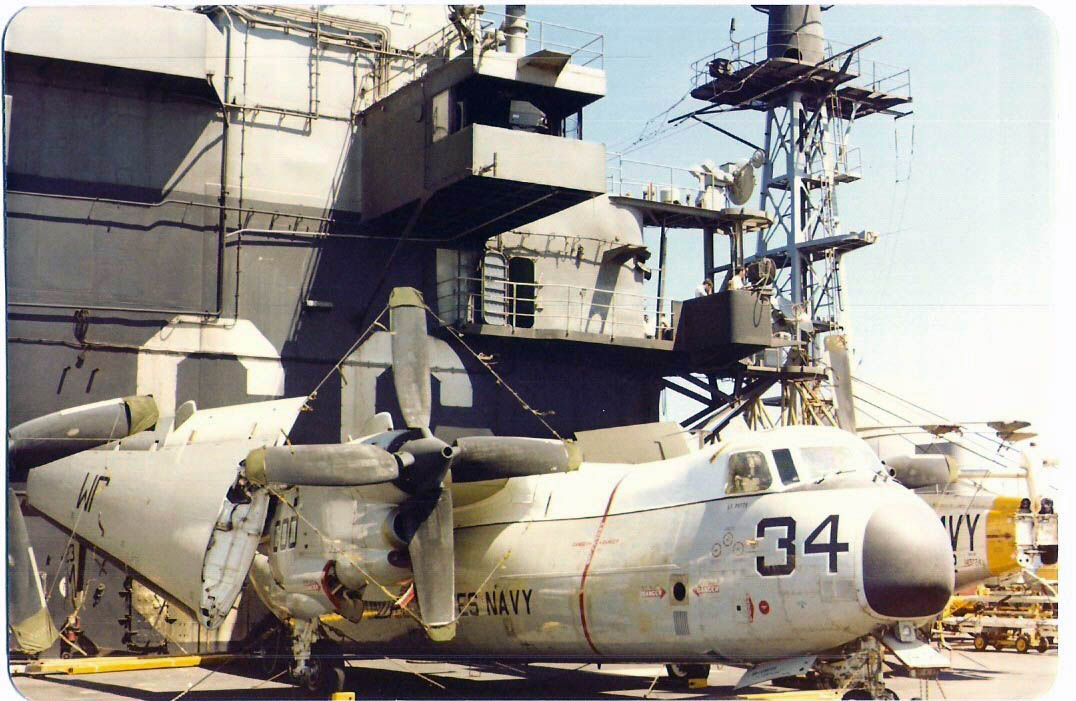|
|
Photos on this page are from Dave Bachman's
collection. Dave served with VR-24 from August 1979 to March 1982. He took these photos
while he was with a COD detachment aboard the USS America on Gonzo
Station in the Indian Ocean during the summer of 1981.
Anyone who has photos,
stories, and material they wish to share is encouraged to send them to
Dick Prather, Webmaster/Editor
of the VR-24 website.
|
USS America Detachment Gonzo Station |
In addition to land-based operational detachments at various sites in the Mediterranean and other
locations from Norway and Scotland to Turkey, Lebanon, and Saudi Arabia, VR-24 was often called upon to
provide dedicated COD detachments onboard U.S. Sixth Fleet carriers. The photos below
depict activities involving VR-24 personnel aboard USS America while on Gonzo Station, and
elsewhere in the Indian Ocean.
Gonzo Station in the Indian Ocean (IO), like Yankee Station in the South China Sea, was the
name given to a piece of ocean to
identify a specific area of repeated or sustained operations. Gonzo Station was established
in the North Arabian Gulf during the Iranian hostage crisis in 1979. A U.S. Navy carrier
task group (an aircraft carrier, escorts/consorts, and support vessels) was maintained
there until events in Iraq necessitated U.S carriers moving into the Persian Gulf to
support the lead up to Desert Storm.
In early May 1981 VR-24 pilots, aircrew, and a squadron maintenance team, departed Sigonella
in C2A 034 and flew aboard the USS America as the carrier steamed from Palma to Port Siad,
Egypt, where she and her consorts would begin their transit through the Suez Canal. The
Suez transit was delayed for twenty-four hours because of the ongoing tension in Lebanon. The
America carrier task group (CTG) made its ten hour trip through the 105 mile long canal
on 6 May, the first U.S. carrier to transit the Suez since the Arab-Israelli War of 1967.
|
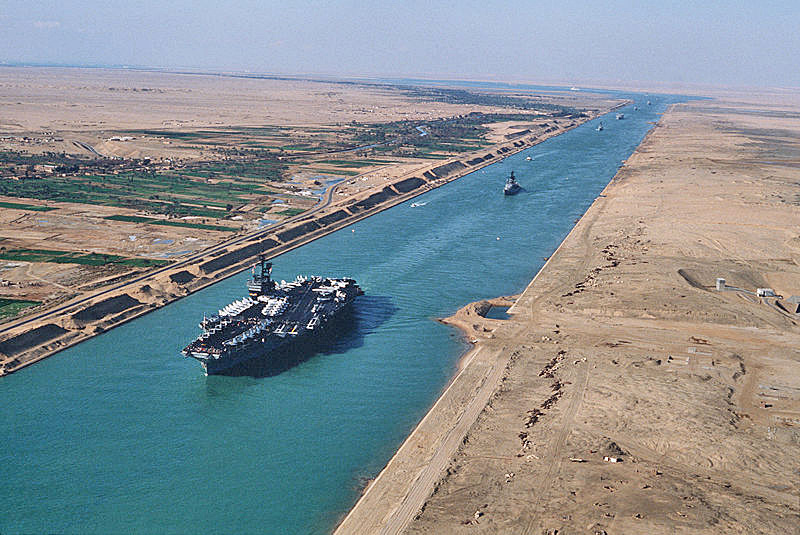 (USN photo)
Uss America transits the Suez, 6 May 1981, enroute to the IO and Gonzo Station.
|
It is impossible to identify all the types of aircraft on America's flight deck in the photo
above, or tell if the large aircraft visible near the forward end of the island is the VR-24 C2A.
It could be one of the E2Cs also assigned to the ship since other information indicates the
C2A was stowed on the hangar deck during the Suez transit. That info also indicates that
VR-24 crews did not often fly COD missions while on Gonzo Station, perhaps because of the long
distances to land bases where U.S. fleet logistical support was available.
The America's first Gonzo on station period ended on 3 June when she departed for a port
visit to Singapore, a good 3500 miles to the southeast, around India and Mayanmar (Burma), and
through the straits of Malacca. Dave Bachman indicates that COD flights were flown as the
carrrier group passed in the vicinity of Diego Garcia, a British controlled atoll several
hundred miles south of the southern tip of India.
By the end of June, America was back on Gonzo Station. It was during this second onstation
period that Dave Bachman joined the detachment. According to Dave, it took him
ten days to get from Rota to Diego Garcia, traveling on an Air Force MAC C-141 that went by
way of Athens and Nairobi. From there he took another C-141 flight back up across the
IO and Arabian Sea to Mahsra, a "small sandbar with a runway" off the coast of Oman. The
last leg of his adventure was on the VR-24 C2 out to the America, and life on Gonzo
Station.
|
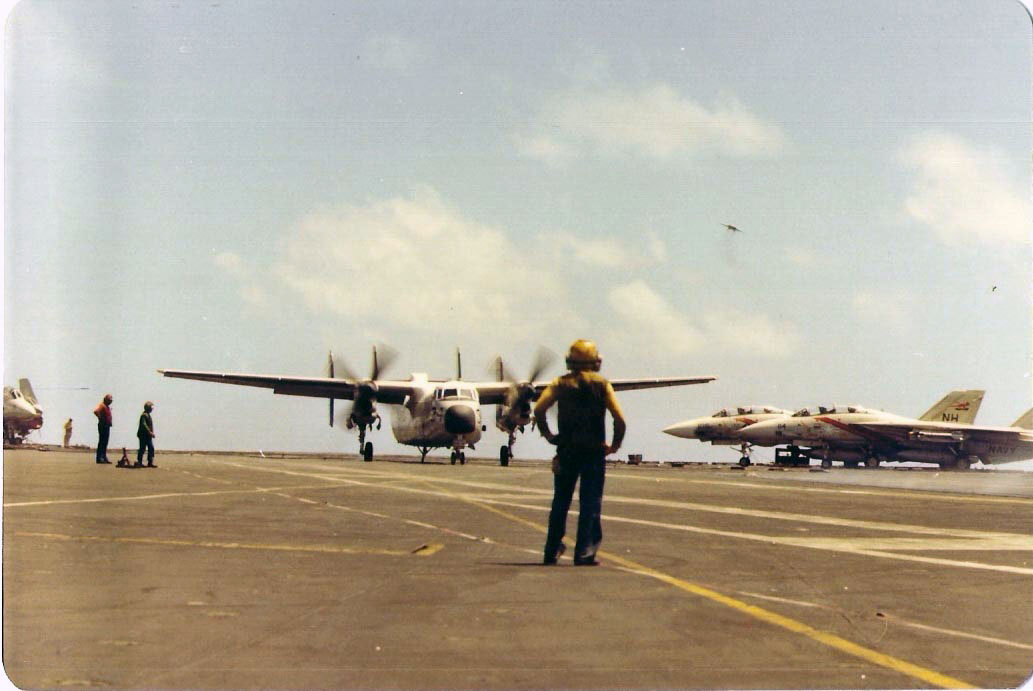
(bachman) VR-24 C2A 034 moments after touchdown
on USS America. Note plane's tailhook in contact with fiight deck. |
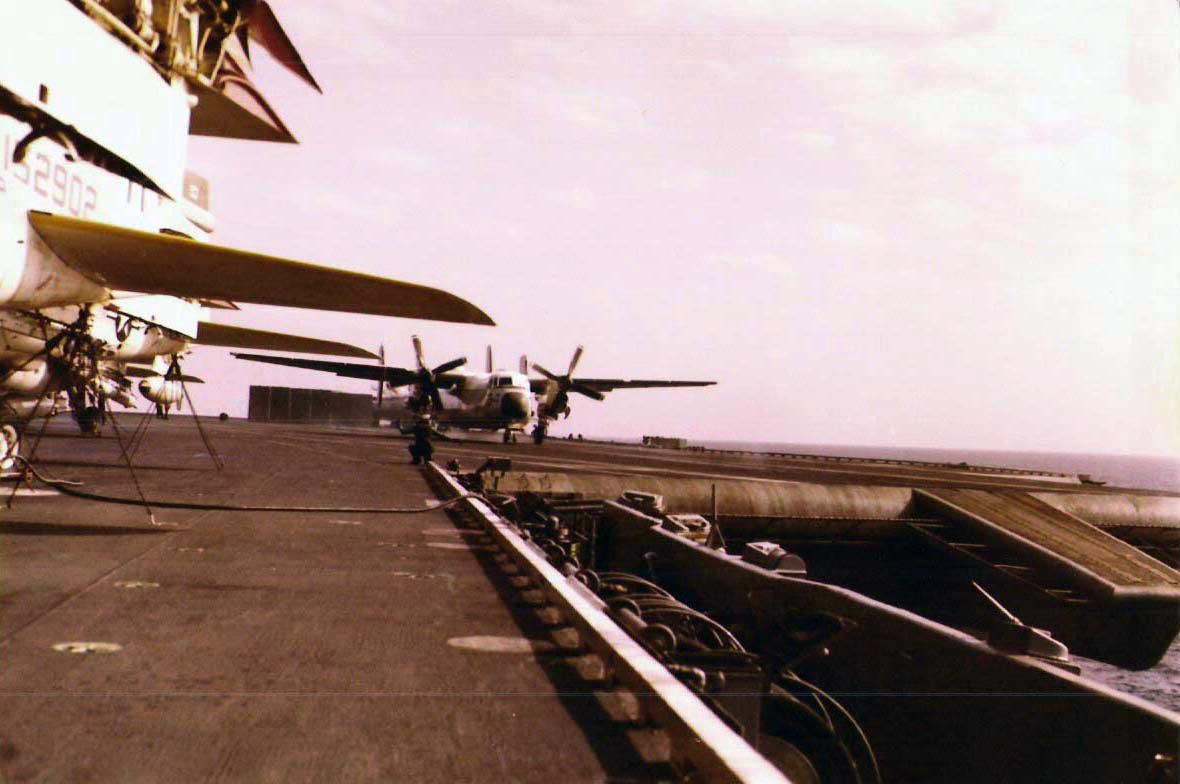 (bachman) C2A 034 appears ready for
launch from a waist cat. Props appear to be turning and jet blast deflector (JBD) is
raised behind aircraft, but the deck is canted relative to horizon, probably due to
the carrier still turning to put the wind straight down the angle for launch. A close look
shows dark figure (Cat offier(?)) squatting in line with deck edge rail/tie-down strip, perhaps making
a final visual check before launch.
|
|
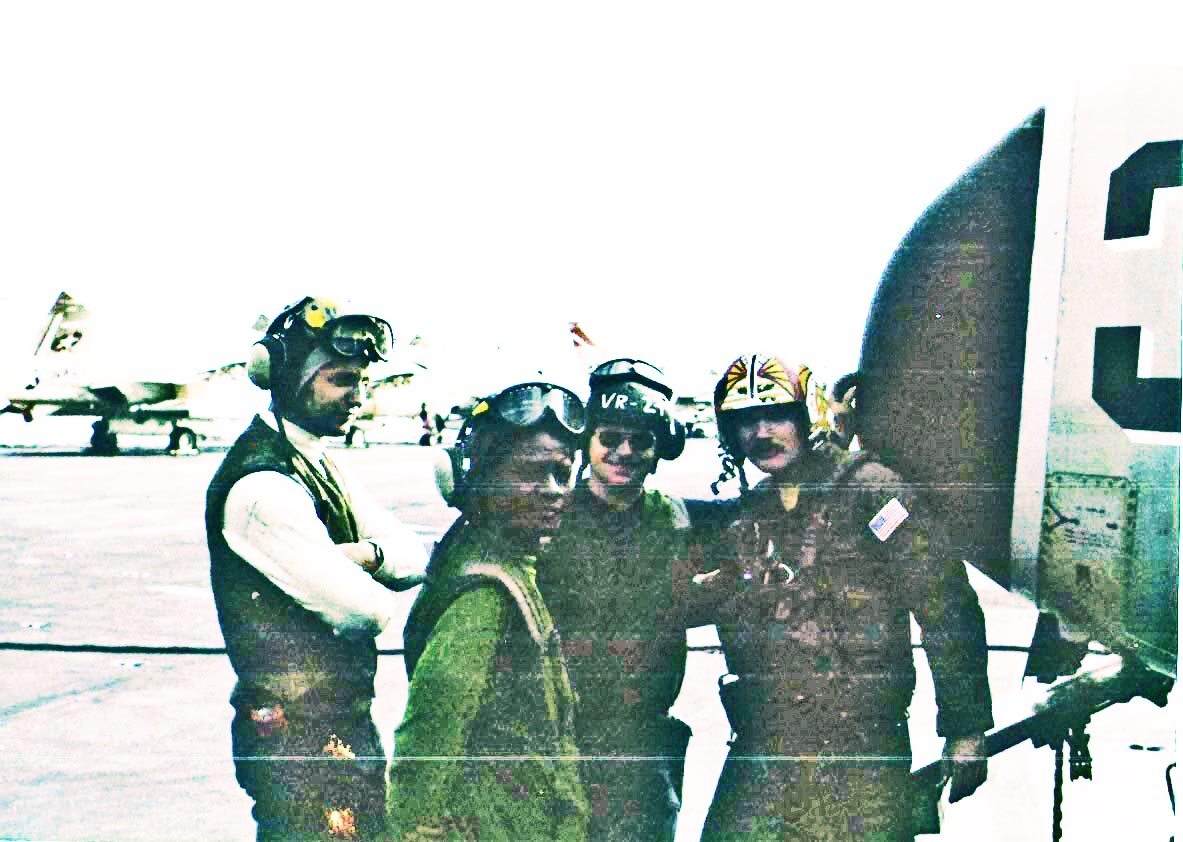
(bachman) C2A pilot (R) talks
with VR-24 maintenance personnel on the America, perhaps prior to a
COD mission. Color-coded shirts idendify technical/support specialties, white
shirts or vests are worn by QA/Safety reps, green by avionics techs. |
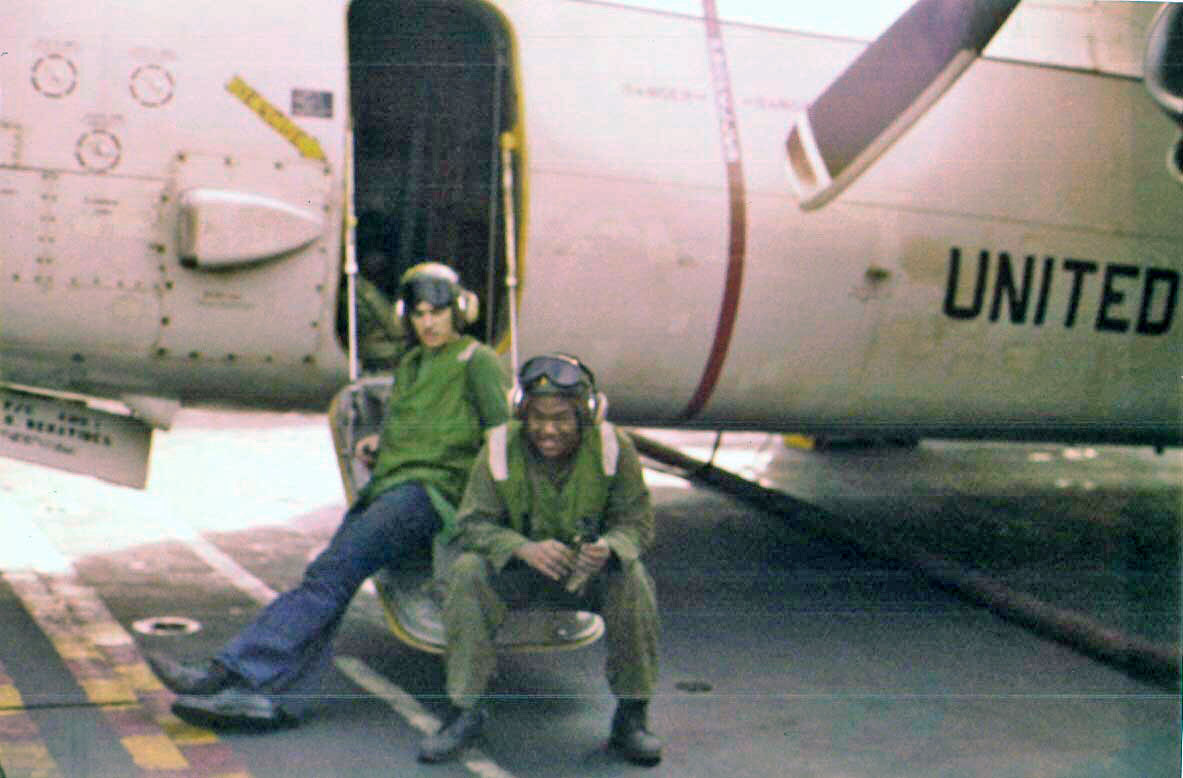 (bachman) Two VR-24 avionics reps appear to
be waiting for the flight crew to show for a COD flight, USS America, Gonzo Station.
|
After the second Gonzo onstation period, which lasted thirty-five days, the America and her consorts
departed for an even more enjoyable port visit, this time to Fremantle, Australia. Upon
crossing the equator enroute,
the crew's pollywogs were initiated into the exhalted order of "Shellbacks". The following
photos present a general view of the "crossing" ceremonies, and some of the VR-24 Det
members who participated.
|
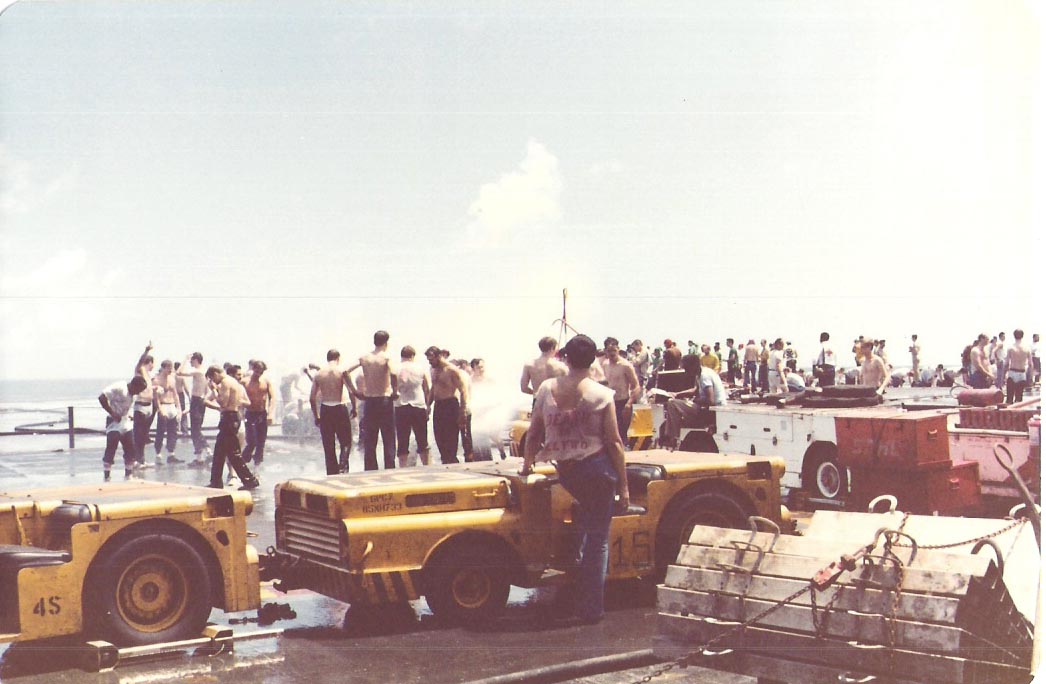
(bachman) Initiats among the America's crew awaiting or recovering from
the delights of their initiation as Shellbacks. |
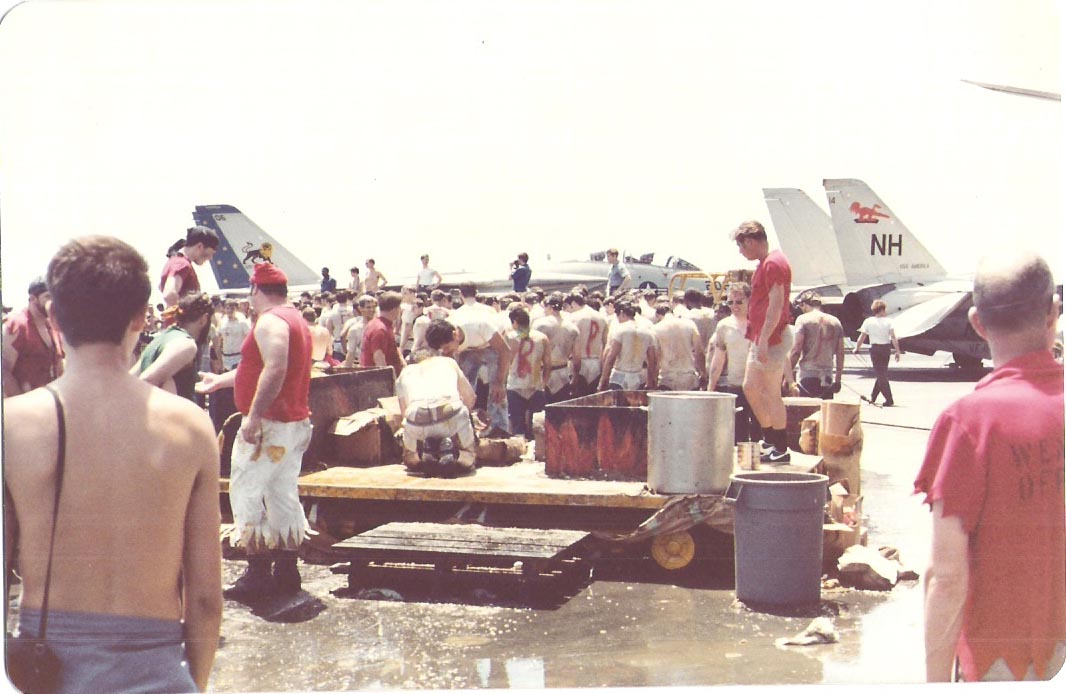 (s_todd) This photo appears to show some
some of the 'trials' used to test the worthiness of pollywogs during the Crossing
the Line Ceremonies.
|
|
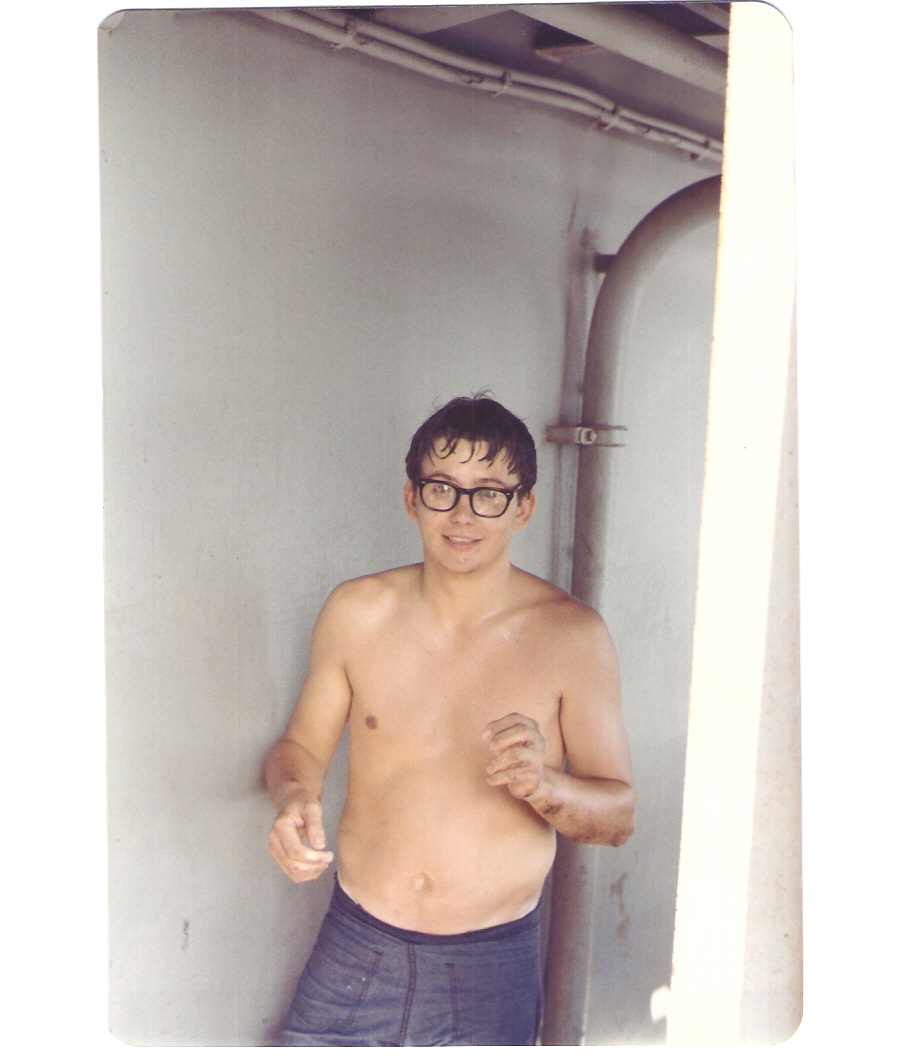
(bachman) AZ3 Geels appears to have been through
the initiation, judging from his freshly washed and stripped appearance. |
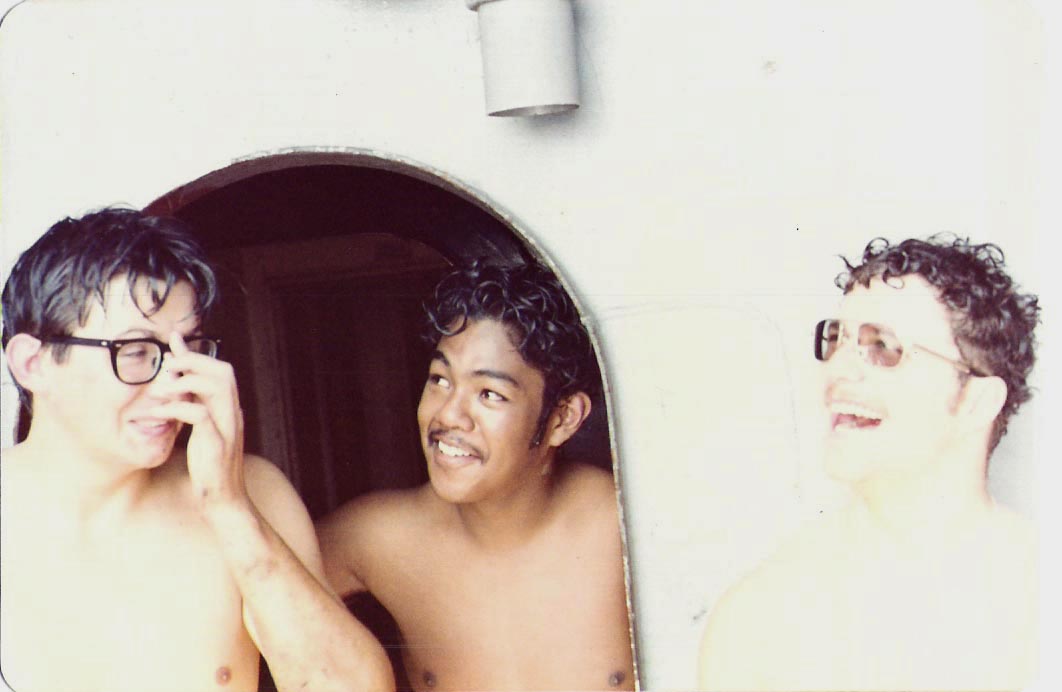 (s_todd) AZ3 Geels (L) with fellow initiates.
Assistance in identifying the other two individuals in this photo would be appreciated.
|
According to Dave Bachman, the VR-24 C2 flew off the America ten days prior to the ship's
scheduled departure from Gonzo station for its return to the Mediterranean via the Red Sea and
Suez Canal. They flew to Qatar, an Island in the Persian Gulf, and from there across the
Saudi Arabian desert to Mecca. Then on to Cairo where they were allowed to exit the
aircraft and get bunks in the airport lounge. The next morning they flew to Suda Bay
for a shower and a uniform change before the final leg to Sigonella. Thus ended an operational
detachment that gave its participants both valuable professional experience and
personal memories that will last a life-time.
The America CTG also had an interesting trip back to the Med. After going to General Quarters
while passing near Yemen and into the Red Sea, the task group began its transit of the Suez
On 21 October under extradinary security. Egyptian President Anway Sadat had been assinated two weeks
earlier, and the extra measures were deemed prudent. An Egyptian Navy patrol
vessel escorted the carrier, while an Egyptian Air Force helicopter conducted
reconnaissance flight over both banks of the waterway. Egyptian Army units patrolled
the adjacent canal roads. Additionally, liaison officers on board the carrier maintained
constant touch with the security forces by radio. The America completed the northbound
Suez transit without incident and resumed scheduled ops in the Med.
Top of Page
Next Page
Go Direct to Scrapbook Operational Detachments Page (1),
(2),
(3),
(5),
(6),
(7),
(8),
(10),
Return to
Scrapbook Page One
Return to Home
Page
Copyright © 2002 VR-24
Association

